When designing or remodeling a kitchen, selecting the right materials is one of the most important decisions you’ll make. It’s about finding the perfect balance between durability, aesthetics, and ease of maintenance. Whether you’re creating a sleek modern kitchen or a cozy traditional space, the materials you choose will play a key role in both the look and longevity of your kitchen. Let’s explore the best options for kitchen countertops, cabinetry, and flooring.
1. Countertops: Strength Meets Style
Your kitchen countertops are the workhorse of the space, enduring daily wear and tear. Here’s a look at some popular countertop materials and their pros and cons:
- Granite
Durability: Granite is known for its incredible toughness, resisting heat and scratches with ease.
Aesthetics: Each granite slab is unique, offering a range of natural colors and patterns that can make your kitchen one-of-a-kind.
Maintenance: Regular sealing is required to prevent staining and ensure the material’s longevity. - Quartz
Durability: Engineered quartz is one of the most durable countertop materials, resistant to both stains and scratches.
Aesthetics: With a uniform appearance and a wide range of color options, quartz can fit seamlessly into modern and contemporary kitchen designs.
Maintenance: It’s a low-maintenance material that only requires occasional wiping with mild soap. - Marble
Durability: Marble is softer than granite, making it more prone to scratches and stains. It’s ideal for low-traffic areas in the kitchen.
Aesthetics: Marble offers timeless beauty with its luxurious veining and natural shine, making it perfect for those seeking a high-end look.
Maintenance: Frequent sealing and gentle cleaning are necessary to keep marble looking pristine. - Laminate
Durability: While affordable, laminate countertops can chip and wear out over time, especially near the edges.
Aesthetics: Laminate offers a variety of designs that can mimic natural stone or wood, but it lacks the authentic feel of premium materials.
Maintenance: It’s easy to clean and maintain but may need replacement sooner than other materials.
2. Cabinetry: Functionality and Design
Cabinet materials set the tone for your kitchen, and they need to withstand daily use while complementing your design aesthetic. Here are the top choices:
- Solid Wood
Durability: Wood cabinets, particularly from hardwoods like oak, maple, or cherry, offer unmatched strength and longevity.
Aesthetics: Natural wood grain brings warmth and character to your kitchen. Wood can be stained, painted, or left unfinished, allowing for a personalized touch.
Maintenance: Regular cleaning and occasional refinishing are required to keep the wood looking fresh. - Plywood
Durability: Plywood cabinets are known for their strength and resistance to warping, making them a reliable choice.
Aesthetics: Available in various finishes, plywood offers a more cost-effective alternative to solid wood with a similar appearance.
Maintenance: It’s relatively low-maintenance, needing only periodic cleaning. - Medium-Density Fiberboard (MDF)
Durability: MDF is more affordable than solid wood but less durable. It can be prone to moisture damage if not properly sealed.
Aesthetics: MDF can be painted to match any design and offers a smooth, uniform finish. It’s often used in modern or minimalist kitchens.
Maintenance: It’s easy to maintain but avoid exposing it to water for long periods. - Thermofoil
Durability: Made by covering MDF with a layer of vinyl, thermofoil is durable and moisture-resistant, though it can peel with heat exposure.
Aesthetics: It provides a sleek, smooth finish and can mimic the look of wood or other materials.
Maintenance: Very low maintenance—just wipe down with a damp cloth to keep it looking new.
3. Flooring: Balancing Comfort and Resilience
Kitchen floors take on heavy foot traffic, so selecting a durable and comfortable material is crucial. Let’s break down the top flooring options:
- Tile
Durability: Porcelain and ceramic tiles are extremely durable, resistant to stains, scratches, and water.
Aesthetics: Available in a wide variety of colors, patterns, and textures, tiles can be a versatile design element in your kitchen.
Maintenance: They’re easy to clean but can be cold and hard underfoot. Grout may require occasional cleaning or sealing. - Hardwood
Durability: Hardwood floors add warmth and elegance but are more susceptible to moisture damage, so it’s important to seal them properly.
Aesthetics: The natural beauty of wood grain never goes out of style, making hardwood a popular choice for both traditional and modern kitchens.
Maintenance: Regular cleaning and refinishing may be necessary to maintain the wood’s appearance. - Vinyl
Durability: Modern vinyl flooring is highly durable and water-resistant, making it a practical choice for kitchens.
Aesthetics: It can mimic the look of wood, stone, or tile while being softer and more comfortable underfoot.
Maintenance: Vinyl is easy to clean and maintain, but heavy furniture may leave marks over time. - Laminate
Durability: Laminate flooring offers good durability but may not hold up as well as tile or hardwood in high-moisture areas.
Aesthetics: It comes in a range of styles that replicate wood or stone at a fraction of the cost.
Maintenance: Easy to clean, but laminate can be damaged by standing water.
Final Thoughts: Choosing Materials with Purpose
When choosing kitchen materials, consider not just aesthetics but also the lifestyle and functionality you need. If you have a busy family, durable and low-maintenance options like quartz countertops and vinyl flooring might be ideal. For those seeking a luxurious look, marble or hardwood can add elegance, but they may require more upkeep.
Investing in quality materials is key to creating a kitchen that’s not only beautiful but also functional for years to come. By carefully selecting each element, from countertops to flooring, you’ll ensure that your kitchen is as practical as it is stylish.



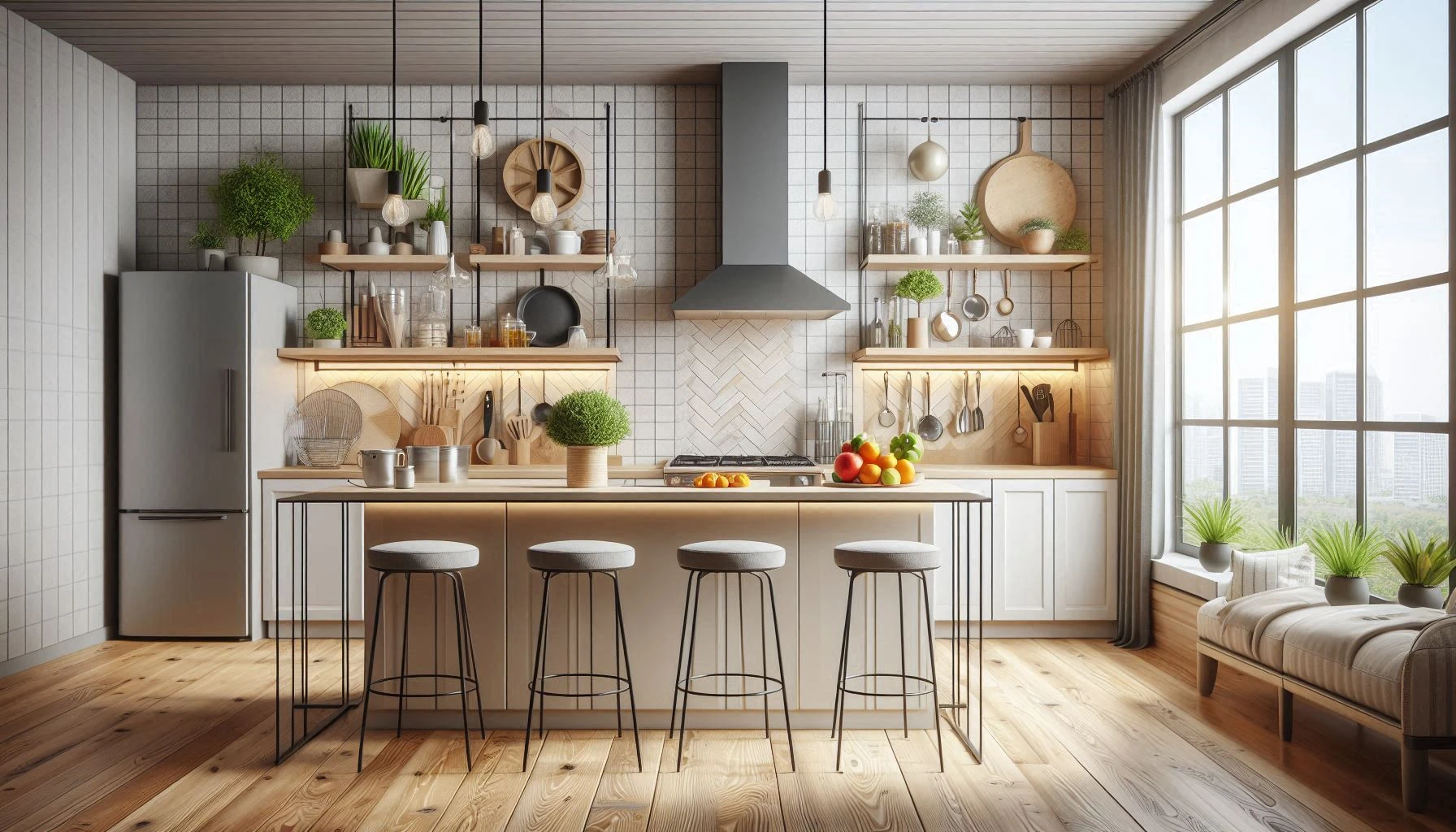
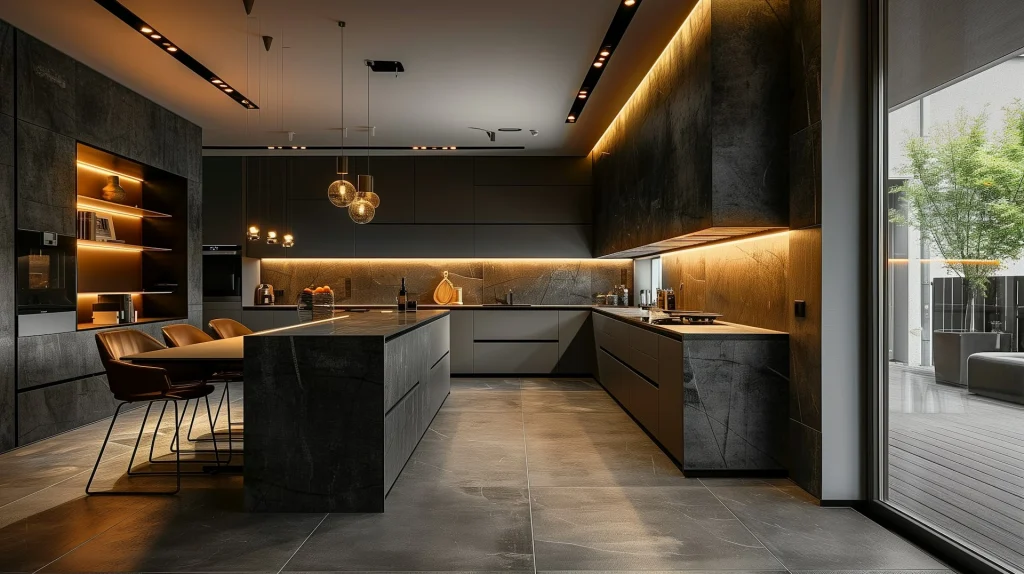
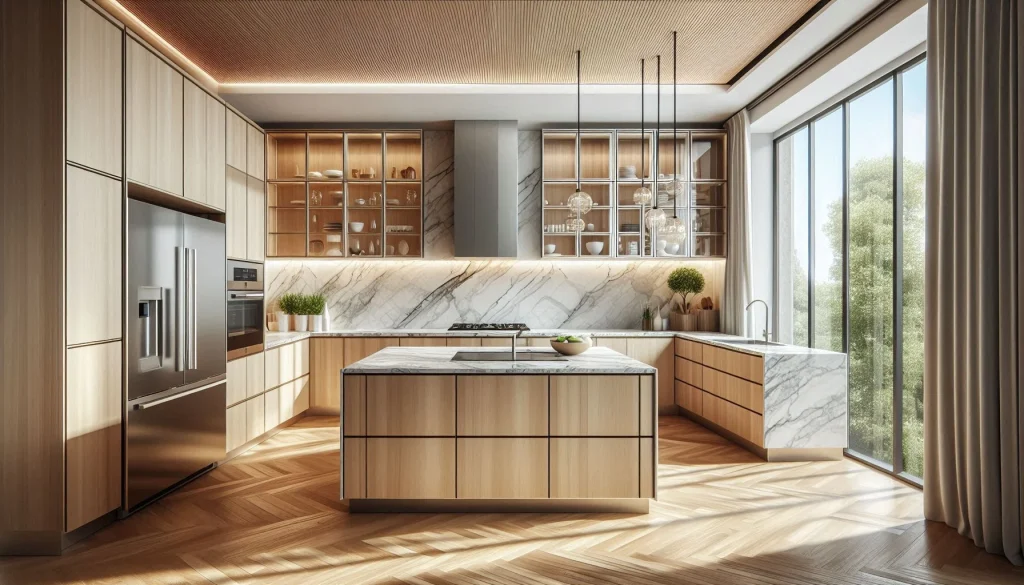
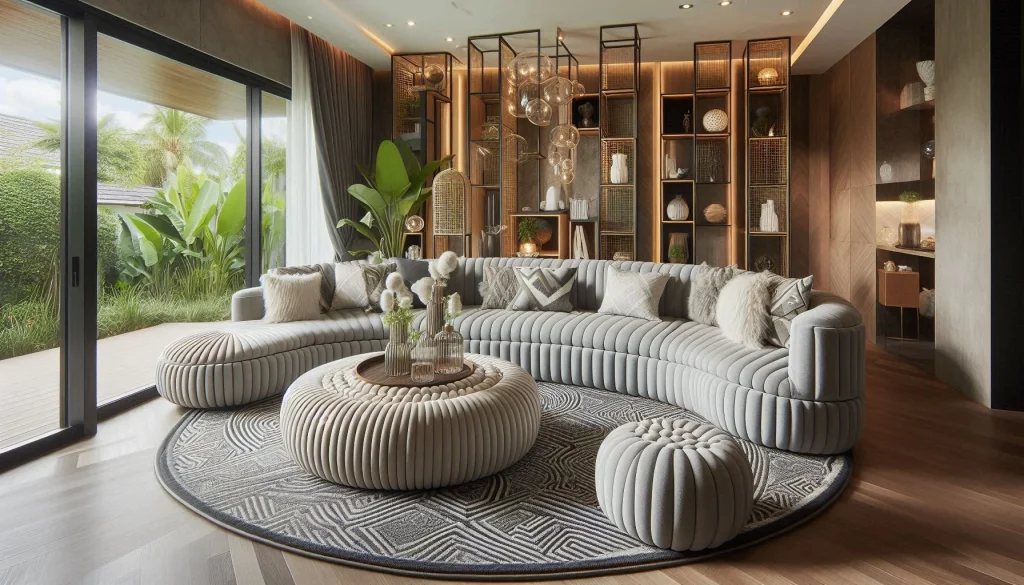
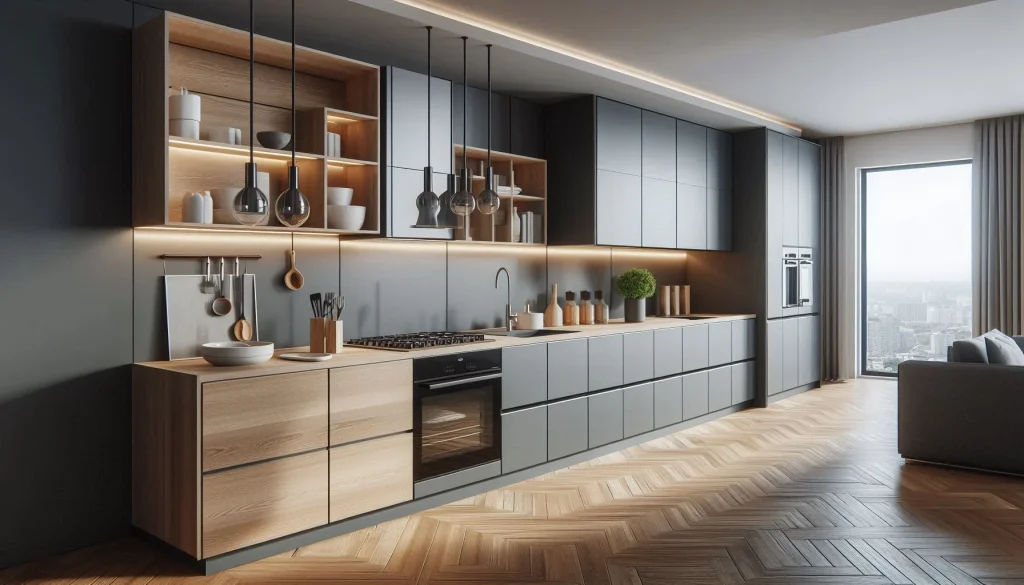
 Furniture manufacturing
Furniture manufacturing Furniture renovation
Furniture renovation Room decoration
Room decoration
One thought on “How to Choose Kitchen Materials: Durability, Aesthetics, and Maintenance”
Whats Going down i’m new to this, I stumbled upon this I’ve found It positively helpful and it has aided me out loads. I’m hoping to give a contribution & aid different customers like its aided me. Great job.